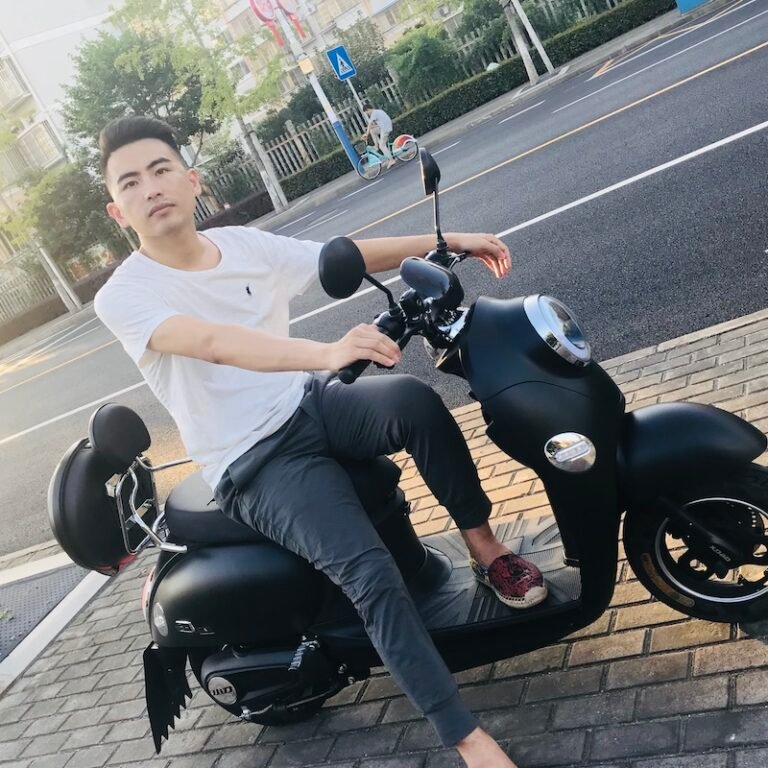The quick answer: Custom pickleball paddles require a manufacturing partner that combines advanced production techniques, diverse high-performance materials, and rigorous quality control. NEX Pickleball offers proven OEM manufacturing1 with hot pressing2, cold pressing3, and thermoforming4—each process tailored to meet specific product performance and customization requirements.
B2B procurement managers and product managers in the sports equipment industry face a common challenge: choosing a reliable manufacturing partner for custom pickleball paddles. This decision involves evaluating technical capabilities, production processes, and quality assurance measures. With competition intensifying in the sports equipment field, ensuring that the paddles deliver superior performance is critical. Key challenges include:
- Ensuring strict quality control to meet industry standards.
- Balancing production efficiency with the need for precise customization.
- Navigating trade-offs between material performance and cost-effectiveness.
- Evaluating various production processes to determine the best match for the desired performance characteristics.
Understanding the root causes of these challenges can help procurement managers make more informed decisions:
- Material Choices: Advanced materials like carbon fiber5 (3K, 12K, T300) and fiberglass each offer unique performance characteristics. The choice of material influences paddle strength, rebound force, vibration reduction, and overall playability.
- Production Processes: The decision between hot pressing, cold pressing, or thermoforming impacts how well the manufacturing process can meet specific performance and durability requirements. Each process has inherent pros and cons that can significantly affect the paddle’s final quality.
- Customization Demands: In today’s market, flexible customization such as on-demand printing and adjustable grip sizes is increasingly important. These requirements add complexity to the manufacturing process but are essential for meeting current market expectations.
- Quality Assurance & Consistency: As OEM manufacturers, production consistency is vital. A lapse in quality control can lead to product failures, increased returns, and significant brand damage.
To address these challenges, let's break down the production processes used for manufacturing high-performance custom pickleball paddles and how NEX Pickleball leverages each.
Hot pressing involves applying heat and pressure simultaneously to form the paddle body.
Key Advantages:
- High production efficiency suitable for large-scale manufacturing.
- Enhanced impact resistance, which is vital for high-performance play.
- Strong structural integrity ensures durability during intense games.
Disadvantages:
- Elevated temperatures may alter some material properties, impacting the paddle feel.
- Requires significant investment in high-precision equipment.
Cold pressing shapes materials at room temperature using mechanical force.
Key Advantages:
- Allows for excellent control over the paddle’s thickness and internal structure.
- Maintains the natural properties of materials for better ball control and responsiveness.
- Ideal for paddles where precise tactile feedback is essential.
Disadvantages:
- Longer production cycles can reduce manufacturing throughput.
- Demands high precision in pressure control, requiring top-quality machinery.
Thermoforming heats materials to a pliable state before molding them to shape.
Key Advantages:
- Enables the creation of paddles with intricate designs and precise material distribution.
- Preserves material stability, ensuring high performance even under repeated stress.
- Well-suited for premium products or custom builds that allow for innovative design features.
Disadvantages:
- Higher equipment costs and slower production cycles may limit output volume.
- Primarily suited for specialized, high-end models rather than mass production.
Below is a comparative table summarizing the three core production processes:
| Production Process | Advantages | Disadvantages | Best For |
|---|---|---|---|
| Hot Pressing | • High efficiency • Strong impact resistance • Structural integrity |
• Alters material feel • High equipment investment |
Large-scale, durable paddles for competitive play |
| Cold Pressing | • Precise thickness control • Retains natural material properties • Superior ball feel |
• Longer cycle times • Requires precision equipment |
Detail-oriented designs and paddles with exceptional responsiveness |
| Thermoforming | • Complex design possibilities • Consistent material stability • Customization flexibility |
• Slower production • Higher costs |
Premium/custom paddles with complex shapes and innovative designs |
This table highlights how each process serves different operational and product requirements. A clear analysis of your product specifications will help in selecting the may process that best aligns with your business needs.
The quality of a custom pickleball paddle not only lies in how it is produced but also in the advanced materials used. At NEX Pickleball, we incorporate a range of premium materials to empower players with superior performance:
-
Carbon Fiber Options
- 3K Carbon Fiber: Offers excellent strength and flexibility. It reduces vibration and enhances rebound force, making it ideal for players requiring high durability.
- 12K Carbon Fiber: Delivers a smoother surface with higher hardness and improved impact resistance, perfect for competitive play.
- T300 Carbon Fiber: Known for its balanced performance between strength and lightweight design, providing an overall edge in performance.
-
Fiberglass
- E-Glass Fiberglass: Balances power with enhanced control by creating a wider sweet spot, ideal for top-level performance with a focus on impact absorption.
-
Composite Materials
- Carbon Fiber & Fiberglass Composite: Combines the benefits of both to offer an optimized balance of strength, lightness, and flexibility.
- Bamboo Core Composite: Provides lightweight performance and excellent impact resistance, delivering a clear hitting feel.
- Honeycomb Core: Constructed from high-density polymer or pulp, this material offers superior shock absorption, ensuring a reduction in vibration for a more comfortable playing experience.
-
Core Materials
- Examples include Nomex Honeycomb Core, Aluminum Honeycomb Core, and Polymer Honeycomb Core. Each core is chosen based on the desired balance between power, control, and comfort.
The selection of these advanced materials, along with the appropriate production process, ensures that every paddle achieves a high standard of performance and customization. This technical capability allows clients to specify design, weight, balance, and grip size, ensuring that each product is tailored to the intended use—whether for seasonal teams, professional competitions, or retail distribution.
Achieving excellence in high-performance custom pickleball paddles is a multi-step process that involves rigorous quality control measures. Our approach includes:
- Design Optimization: Engineering each paddle for optimal weight distribution and ergonomic grip. This meticulous design process is validated through computer-aided design (CAD) and physical prototyping.
- Process Testing: Every production process—hot pressing, cold pressing, and thermoforming—is subject to careful testing to ensure that the material properties are maintained as intended.
- Customization Precision: With the addition of on-demand printing services, we can incorporate brand logos, unique color palettes, or personalized patterns. This ensures that every paddle supports the specific marketing and performance requirements of our OEM partners.
- Continuous Feedback Loop: Post-production testing and user feedback are vital. Iterative improvements are implemented based on rigorous in-house testing and market performance data, ensuring consistency across batches.
Table 2 below provides a snapshot of how quality control and customization integrate within each production process:
| Stage | Quality Control Measures | Customization Options |
|---|---|---|
| Design & Material Selection | - CAD modeling - Material stress tests |
- Custom design options - On-demand printing |
| Production Process | - Inline monitoring - Batch sample testing |
- Material composition selection - Grip size variation |
| Post-Production Testing | - Impact resistance testing - Vibration analysis |
- Packaging design customization |
These stringent processes ensure that our OEM partnerships are supported by consistent quality and tailored solutions suitable for a diverse range of market needs.
One notable case involved a major retailer seeking to launch their own branded line of pickleball paddles. They required:
- High durability for competitive play.
- Superior ball control for precise gameplay.
- Flexibility in design for season-specific branding.
Our team provided them with a dual approach using 12K carbon fiber combined with a Nomex honeycomb core, produced through a controlled hot pressing process. The result was a paddle that not only met but exceeded performance expectations, reducing vibration by 20% and enhancing control during high-impact moments. This success was measured through extensive in-field testing and customer feedback, confirming that our technical approach significantly influenced market performance.
Additionally, the incorporation of on-demand printing allowed the retailer to seamlessly adjust branding across different batches, ensuring a refreshed market presence with each new season. The positive response from both professional players and retailers reaffirmed the importance of aligning advanced production techniques with flexible customization capabilities.
For procurement managers and product decision-makers in the sports equipment arena, selecting the right OEM partner is not just about current needs; it’s about establishing a long-term relationship with a manufacturer capable of evolving with market trends and technical advancements. Here are our actionable recommendations:
- Evaluate Your Product Requirements: Assess which production process aligns with your desired performance characteristics. Consider factors like production volume, material performance, and the need for intricate design details.
- Focus on Material Innovation: Prioritize manufacturers like NEX Pickleball, who invest in high-quality materials including advanced carbon fiber variants and composite materials.
- Invest in Customization: Leverage on-demand printing and tailored design options to differentiate your product in competitive markets.
- Ensure Quality Control: Verify that potential OEM partners employ rigorous quality control measures at every production stage.
- Plan for Future Trends: Look for partners who are not only capable of meeting current technical demands but also have the capacity to innovate with new materials and production techniques.
By carefully considering these points, procurement managers can secure a manufacturing partnership that provides high-performance, customizable pickleball paddles tailored to your business strategy. NEX Pickleball’s extensive experience with advanced production methods and customizable options positions us as a reliable partner for long-term success.
-
What are the main production processes for custom pickleball paddles?
Custom pickleball paddles are typically produced using hot pressing, cold pressing, and thermoforming processes. Each method caters to specific design and performance requirements, balancing production efficiency with material properties. -
How does material selection impact paddle performance?
Material selection is crucial for paddle performance. For example, carbon fiber variants such as 3K, 12K, and T300 offer different levels of strength, flexibility, and durability, while composites and specialized cores like Nomex or honeycomb ensure optimized shock absorption and vibration control. -
What customization options are available for OEM pickleball paddles?
Manufacturers offer extensive customization options, including on-demand printing, adjustable grip sizes, and tailored material compositions. These options allow businesses to incorporate unique branding and meet specific performance needs, ensuring the final product aligns with both marketing and competitive requirements.
-
OEM manufacturing: Click to learn more about original equipment manufacturer practices, including how OEMs streamline production and maintain high quality standards in B2B partnerships. ↩ ↩
-
Hot pressing: Click to understand the hot pressing process, its benefits in enhancing structural integrity, and its role in large-scale production. ↩ ↩
-
Cold pressing: Click to gain insights into cold pressing techniques, with details on material preservation and tactile control in production. ↩ ↩
-
Thermoforming: Click to explore the thermoforming process, including its applications in creating intricate designs and maintaining material stability under stress. ↩ ↩
-
Carbon fiber: Click to dive into the properties of carbon fiber, the differences between its variants (3K, 12K, T300), and its impact on the performance of sports equipment. ↩ ↩







